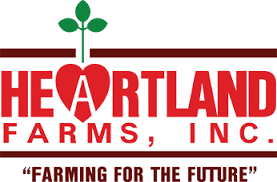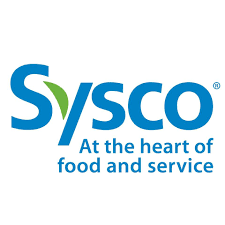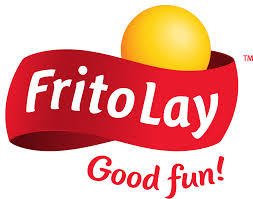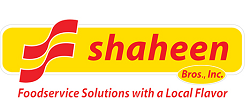IDAHO FALLS, Idaho — Eric Meisel wants to create the right flavors for his restaurant customers in the greater Ohio region.
And one way to best meet their needs is to learn about ingredients and stay on top of trends, which led Meisel to this day on Sept. 27 — the day he stood inches from a mountain of yellow goddess potatoes, piled three-people high inside a storage shed at Wada Farms in Idaho.
“I help independent restaurants update their ingredients for dishes and make new recipes. I create dishes that require less kitchen labor,” Meisel said while riding on a tour bus with 30 people on the Idaho Potato Commission's harvest tour focusing on fresh potatoes for foodservice. Formerly a Culinary Institute of America-trained chef, Meisel now works as a culinary specialist for Gordon Food Service.
Potato primer
As striated farm fields of brown resembling corrugated cardboard flew by in a blur outside the bus window, the tour participants listened to Idaho potato facts and history from Alan Kahn, the commission's vice president of foodservice. Between quips in his signature deadpan delivery, Kahn shared that more than 94% of fresh potatoes are the russet variety, and Idaho supplies one-third of potatoes consumed in the U.S.
The ancestors of almost all potatoes originated from the Andes Mountains of Peru, where they adapted to the high elevation, warm days, cool nights, dry air and mineral-rich soil — similar to conditions found these days in Idaho, he said.
“This part of the state has volcanic soil that potatoes love, 280 days of sunshine a year and we're 100% irrigated from an underground aquifer north of here that's the size of Lake Erie,” Kahn said. “There are a lot of growers here with straws to the ground, drawing from that.”
In any given year, those Idaho potato growers harvest between 300,000 and 320,000 acres of potatoes, averaging 13.5 billion pounds of Idaho potatoes per year, according to the commission.

Wada Farms grows yellow goddess potatoes among other varieties. Photo: Amy Sowder
The 2023-24 growing season has been a banner year, producing 328,000 acres of Idaho potatoes — up about 13% over last year, which should amount to about 14 billion pounds, said Armand Lobato, the commission's foodservice promotion director for the Western U.S.
“Our closest competitor is Colorado, but that's 50,000 acres,” Lobato said.
About 60% of Idaho's crop is processed for frozen and dehydrated uses, and the remaining 40% is for the fresh market, split evenly between retail and foodservice, he said.
The tour participants included representatives from Bloomin' Brands, Darden Restaurants, US Foods, Chef's Warehouse, Gordon Food Service, S. Katzman Produce of New York and a hotel management company who were interested in the growing trends of specific varieties, what their characteristics are and how it applies to foodservice needs.
The five grower-marketer-shippers that opened their fields, offices, sheds and packing houses to the tour — Rigby Produce in Rigby, Sun-Glo of Idaho in Sugar City, Bench Mark Potato in Rexburg, Pleasant Valley Potato in Aberdeen and Wada Farms in Idaho Falls — shared their experience.
From the potato growers
Most of the growers said the same thing about the two most common varietals of russet: Burbank is losing ground to norkotah.
Burbanks have enjoyed top status since the early 1900s for its lower water content and thus firmer texture that holds up well in cooking.
There's been a big shift since the COVID-19 pandemic, said Kent Sutton, whose 375-acre family farm is part of the Rexburg-based Bench Mark cooperative of five growers. Bench Mark harvests about 4 million pounds of potatoes a day for customers that are 85% foodservice and 15% retail.
“For the first time we're giving over to the dark side and growing more norkotah. They're easier to grow, and they pack out easier,” Sutton told the group. However, he will still grow burbanks for customers who want it for the taste and can ignore the deformities when distressed.
Emily Painter from Pacific Coast Fruit Co., Portland, Ore., said she didn't realize all the differences between russet burbanks and russet norkotahs until joining this tour because burbanks are the preferred variety in Washington state.
“It was interesting to learn how burbanks are the more desirable variety for foodservice,” Painter said. “We're looking to boost our foodservice business in Seattle, so I'll take that home to my sales team.”

Emily Painter of Pacific Coast Fruit Co. enjoyed seeing the top of the potato pile at Wada Farms. (Photo: Amy Sowder)
In Aberdeen, Pleasant Valley Potato is supplied about 270 million pounds of potatoes each year by four partner farms. Leading the company's operations, Eric Wahlen shared with the group how his grandfather came from Sweden, arriving to Idaho on a motorcycle to homestead in 1913. When he died in middle age, Wahlen's father, then 13, and his father's older brother took turns running the farm and attending school.
Potato tradition remains in Aberdeen, where upper grade schools still close at harvest time so the teens can help with the potato harvest for two weeks, Wahlen said.
“We've always run more norkotahs than burbank. Our focus in this shed is foodservice. Our growers are always trying to grow for size but sometimes certain fields don't cooperate,” he said, pointing to the conveyor belt of potatoes rolling by in the sorting, grading, cleaning and packing house, shooting off into the designated departments. “These we've just harvested this morning."
Mikal Jones, a culinary student who won a Café Conference scholarship to attend the tour trip, stared and laughed when he saw a potato box labeled InFront Produce, as it's for Outback Steakhouse. He wants to be a personal chef and TV personality in the culinary world and already partners with major brands for social media posts.
“I've never seen a harvest,” Jones said. “When you see the work and dedication people put into this, it's crazy.”

Sun-Glo of Idaho took the tour group to the field, where Armand Lobato of the Idaho Potato Commission dug out some potatoes by hand, revealing what lay underneath the dirt. (Photo: Amy Sowder)
After a field walk in Sugar City, Sun-Glo of Idaho growers took the tour group into a storage shed that can house up to 7.5 million pounds of potatoes. Participants climbed stairs to reach the top of the potato mountain and pose for photographs.
“This is how Idaho does it year-round and does it well. We won't run out this year,” said Tron Crumly, who handles sales for Sun-Glo.
Later, the crew lunched in an airplane hangar where two women from the owning family made French fries from potatoes harvested four hours earlier.



















